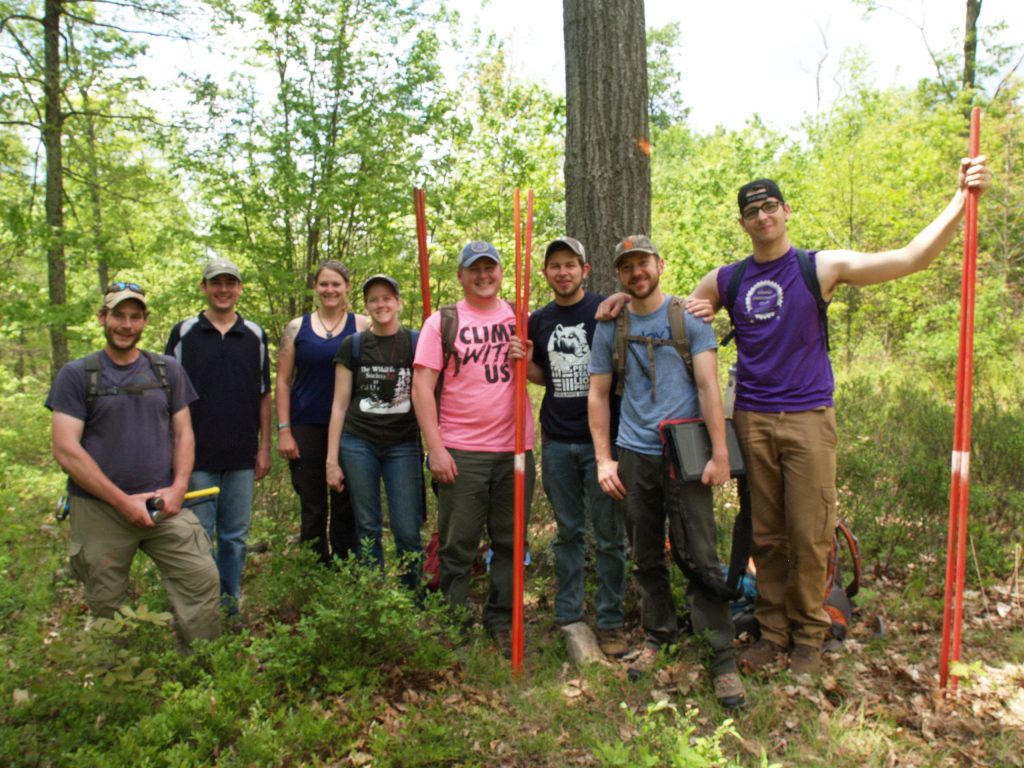It’s summer! Well, not officially but we all know that once Memorial Day hits, everybody shifts into vacation mode. That is unless you are one of the 8 lucky people working on a veg crew! Every summer 2 crews (4 members each) head into the woods to re-measure and re-count vegetation on 200 permanent plots distributed across the four study areas.
This is not your typical summer job. The semester may be over but their classes are not done and neither is the testing. Crews have an intensive 2-week training course. This is to ensure that data collection is as consistent as possible from year to year.
In these plots, crews count everything from the largest tree to the smallest plant. They need to be able to identify well over 200 plant species AND collect data properly. Take tree seedlings for example. They are not only identified by species but also by height class (0”-6”, 6”-12”, 1’-3’, 3’-5’, and over 5’).
Besides species identification, crews have to learn how to enter data into field computers, to backup the data (!), and most importantly, to navigate to plots that might be a half mile or more from the nearest road. If they can’t get to the plot, they can’t collect any data!
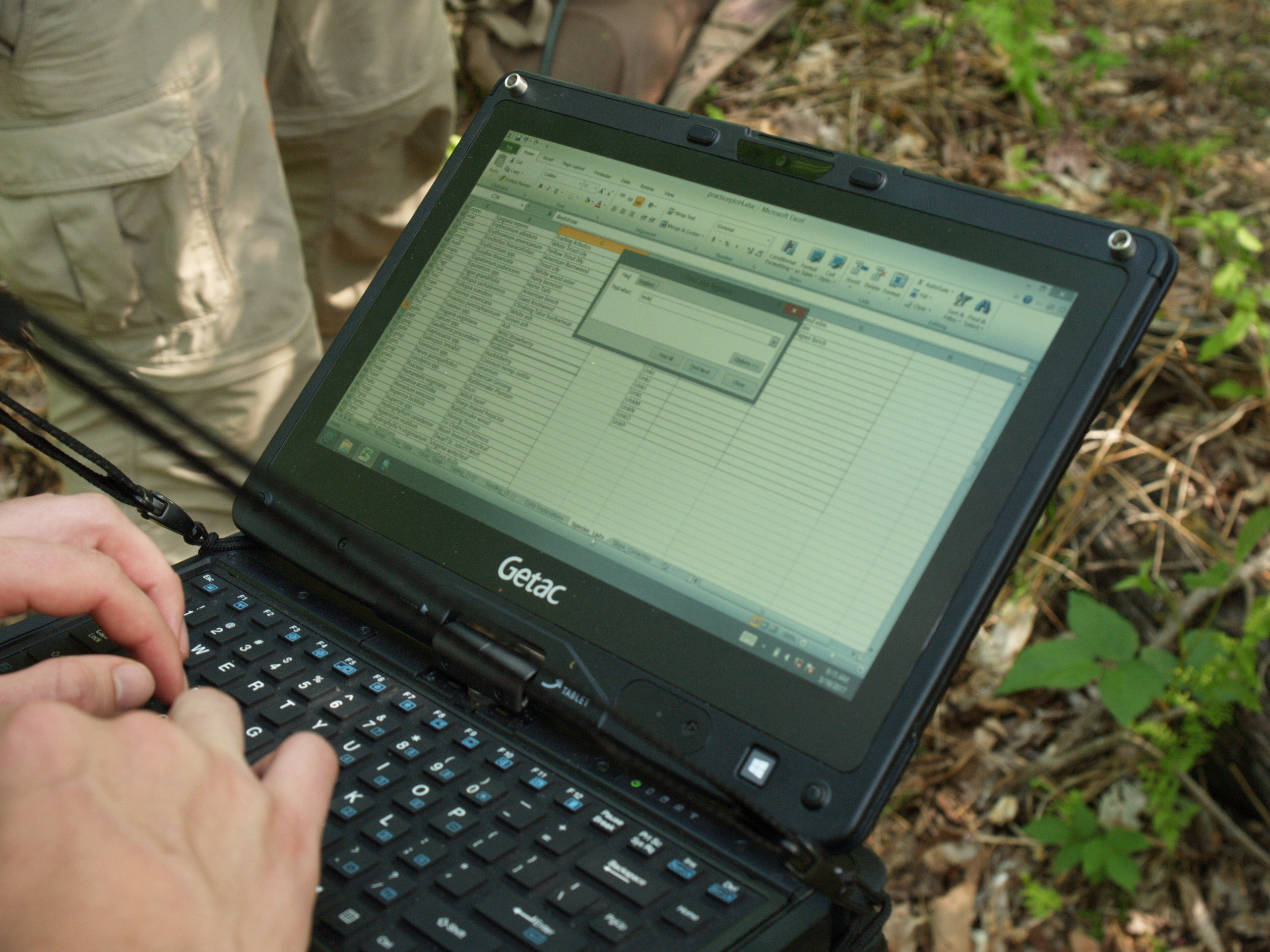
At each sampling site, we have 5 vegetation plots – one of which is fenced to keep out deer. The first step is measuring the dbh (diameter at breast height) of all trees within 24 feet of the plot center (that also happens to be 1/24th of an acre – coincidence?!).
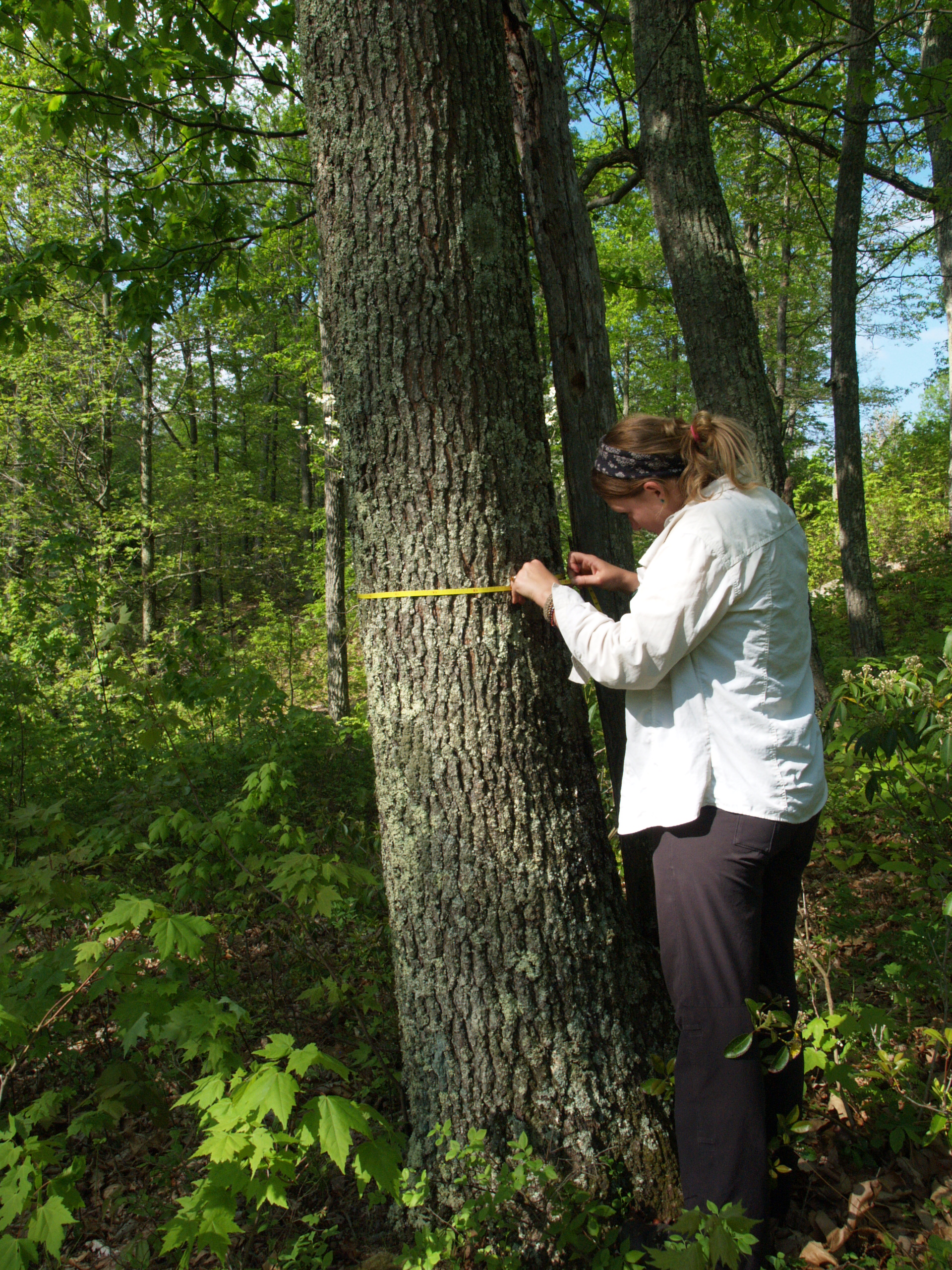
How do you tell a red oak (Quercus rubra) from a black oak (Quercus velutina)? Both have similar bark and leaves. Once you’re good enough, you can “just tell the difference.”
But if you’re not sure (or not good enough yet), pull out your pocket knife and use the point to carefully dig out some bark from just below the outside layer.
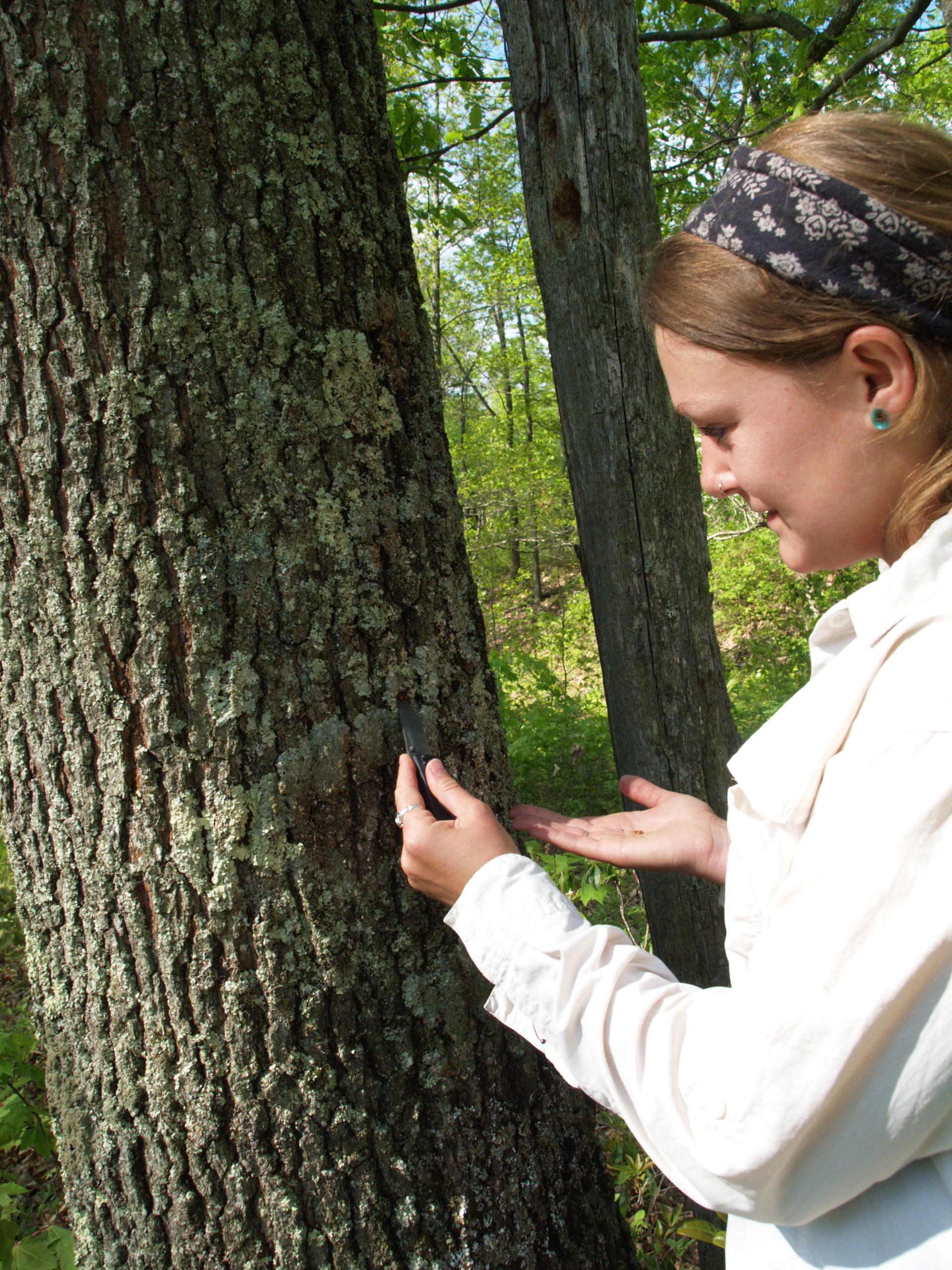
If it has a bright yellow color, it’s a black oak – go figure!
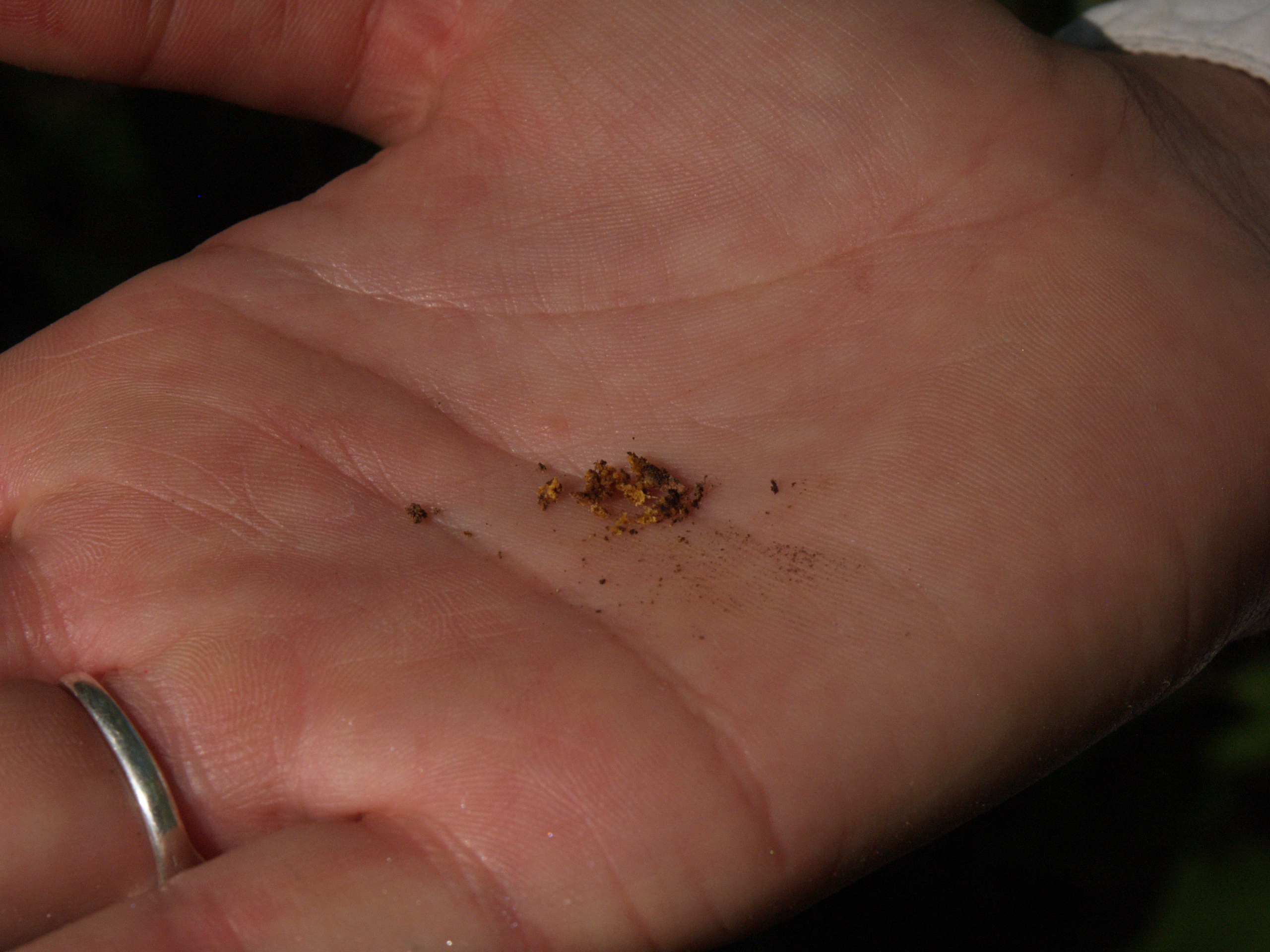
After the trees are counted and measured then it’s on to seedlings and specific herbaceous plants (such as ones preferred by deer, like Indian cucumber root, Solomon’s seal, etc.). For some species, like grasses, we just estimate areal coverage (how do you count grass anyway!).
We have two different plot sizes: mil-acre (1/1000th of an acre – 3.72-ft radius) and a larger plot of 1/300th of an acre (6.8-ft radius). This is so results from our study can be compared to results from the Pennsylvania Bureau of Forestry and the U.S. Forest Service because each agency uses different plot sizes.
We use high tech equipment – a pair of sticks painted red so they are less likely to get lost! – to delineate the plot into quadrants then count everything in each quadrant.
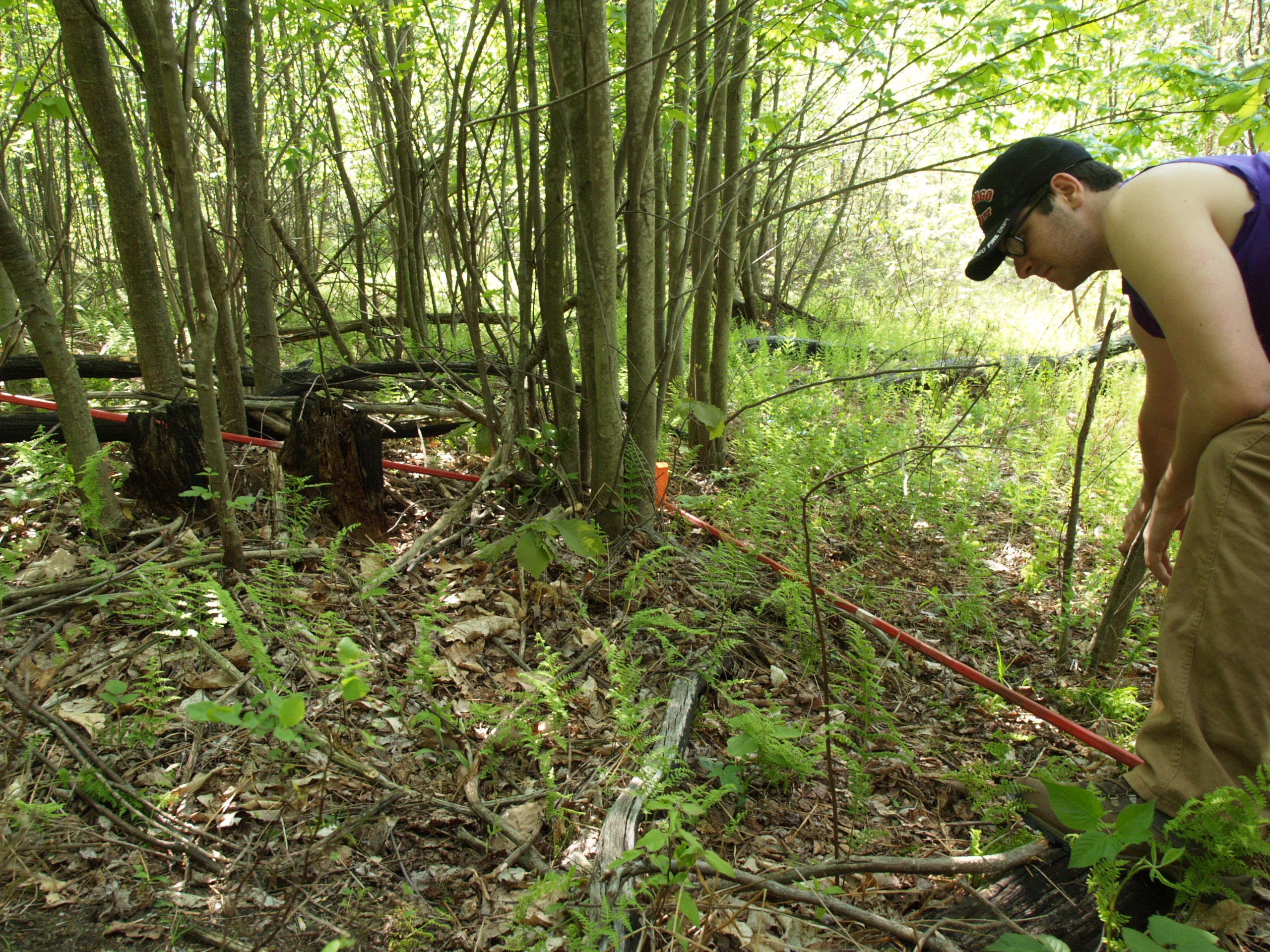
That’s when 2 weeks of learning are put to the test.
Below are just a few of the plants the crew had to identify on their exam. Could you be a crew member? Take the test! [Answers provided at below]
Q 1. It’s an oak seedling. What species?
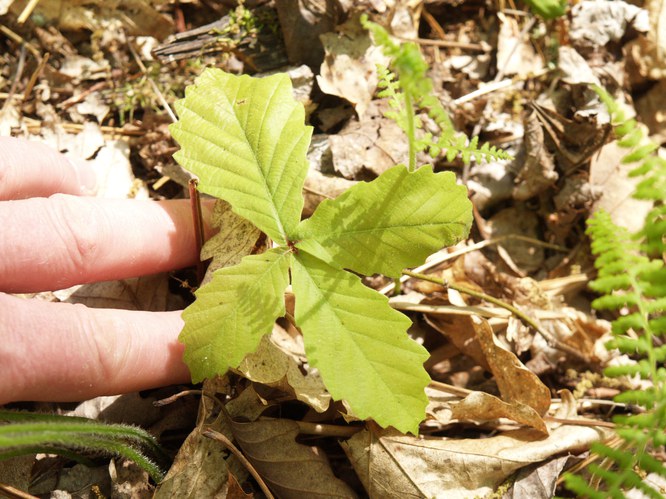
Q 2. Another oak!
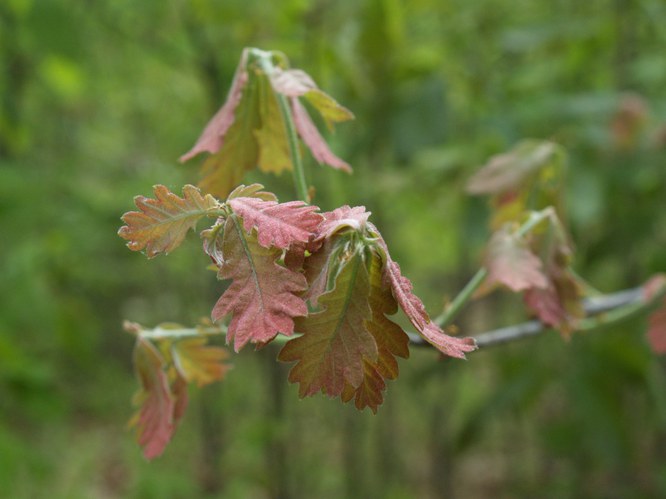
Q 3. Come July these will be tasty!
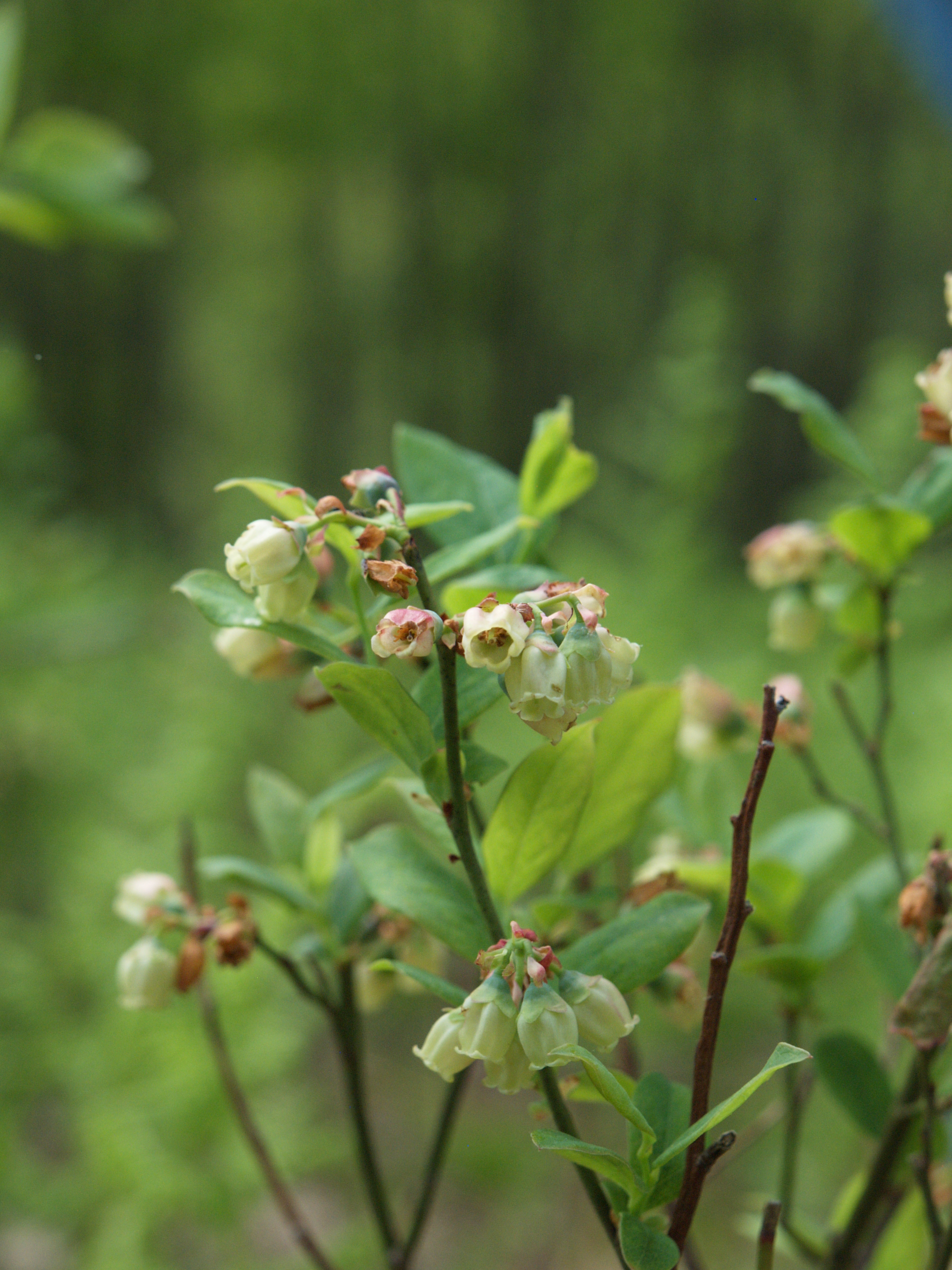
Q 4. Soon to be beautiful
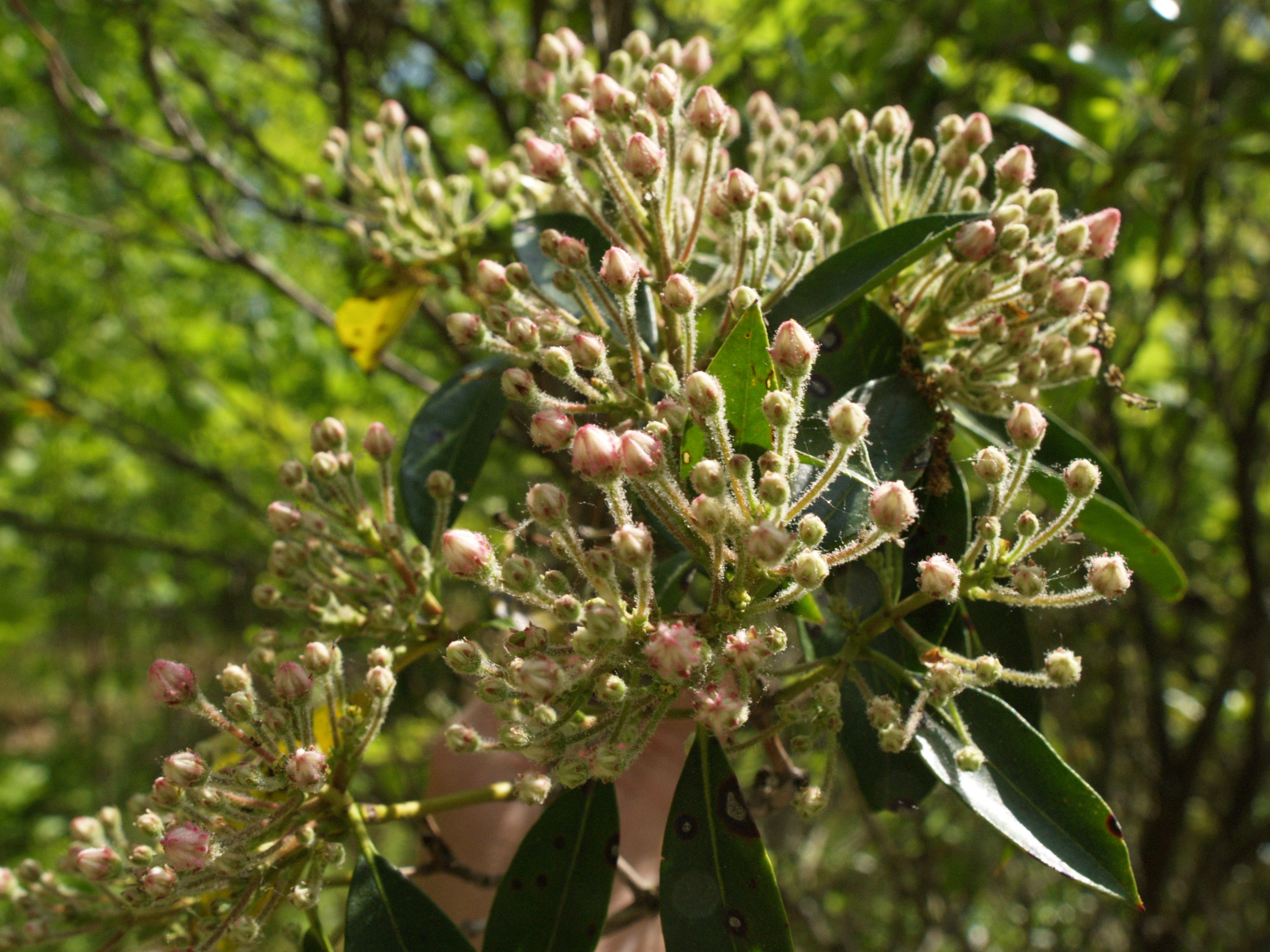
Q 5. This ground plant will have bright red berries in autumn.
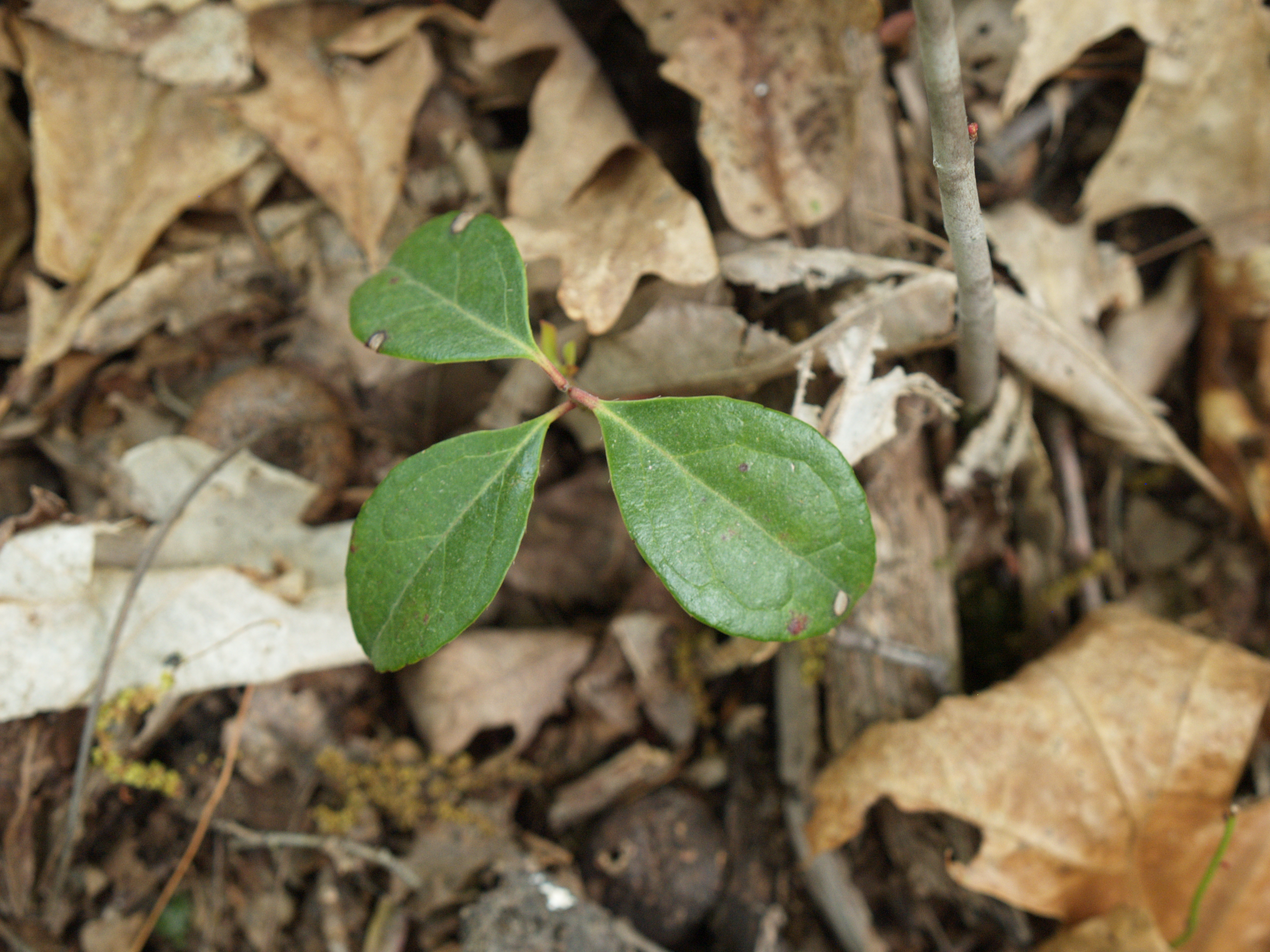
Q 6. The deer seemed to like this plant!
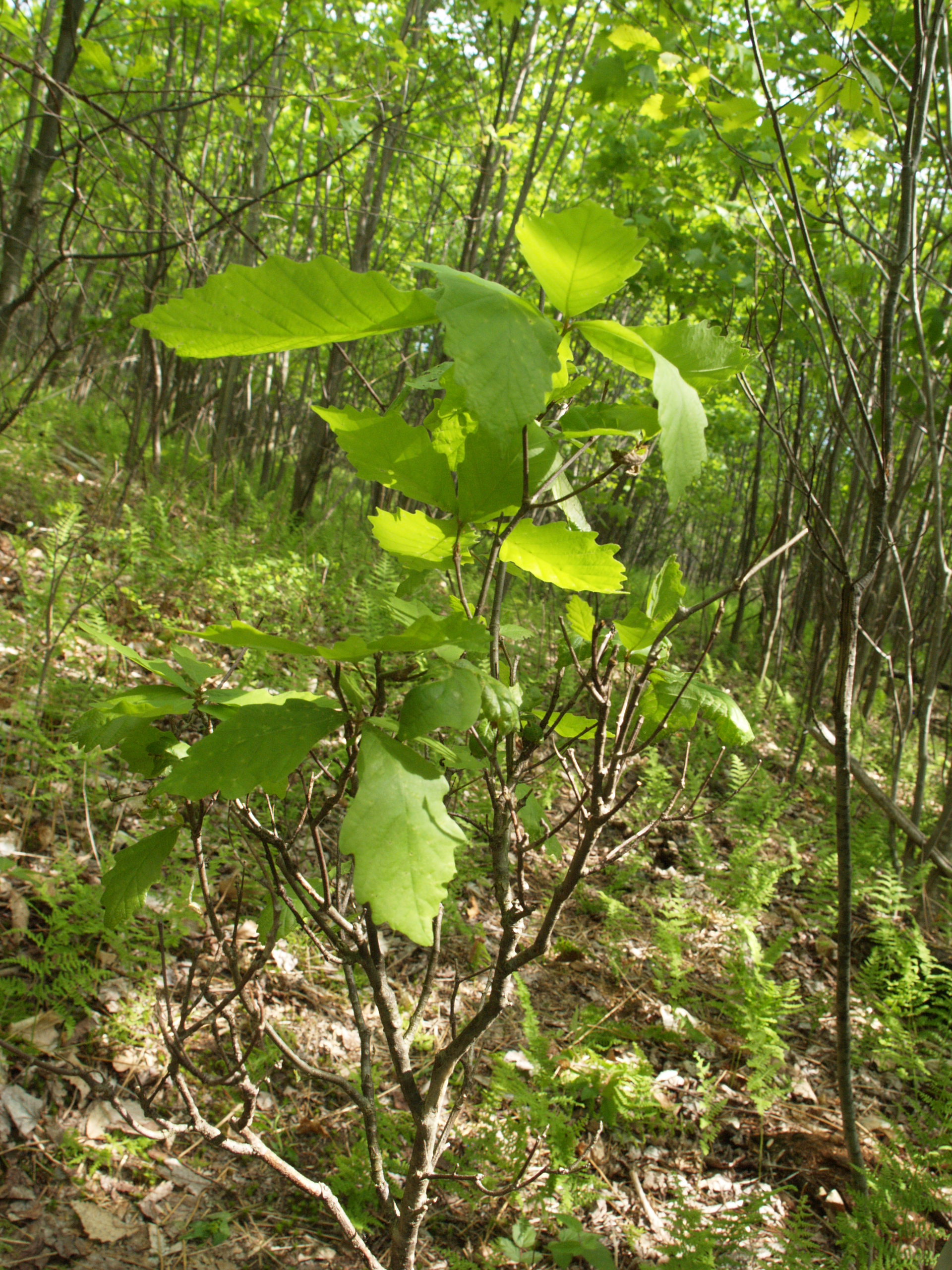
Q 7. Named after a reptile native to Pennsylvania.
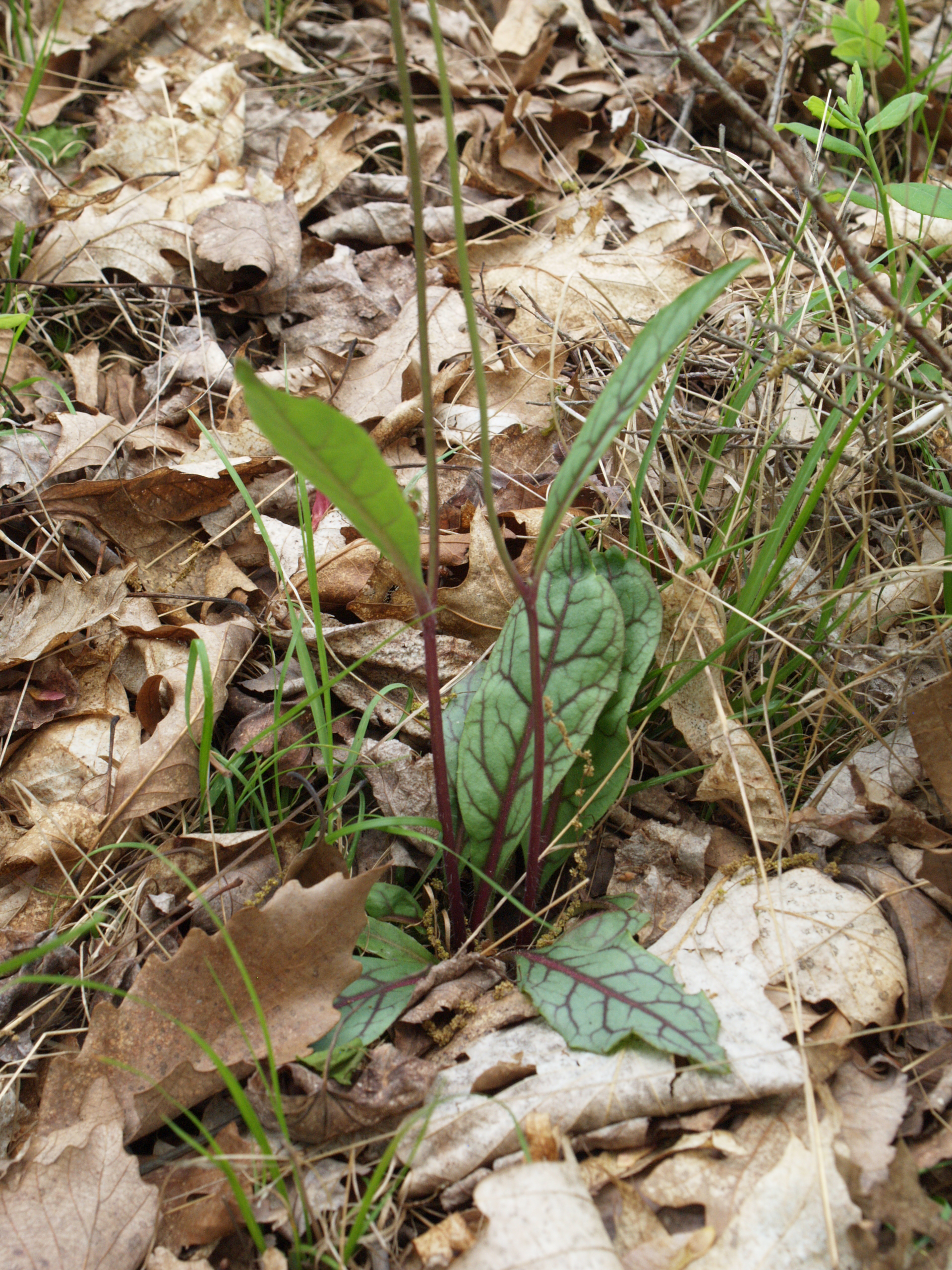
Tests are not always fun, but you can’t ask for a better place to have your knowledge challenged than under a tree in Penn’s Woods.
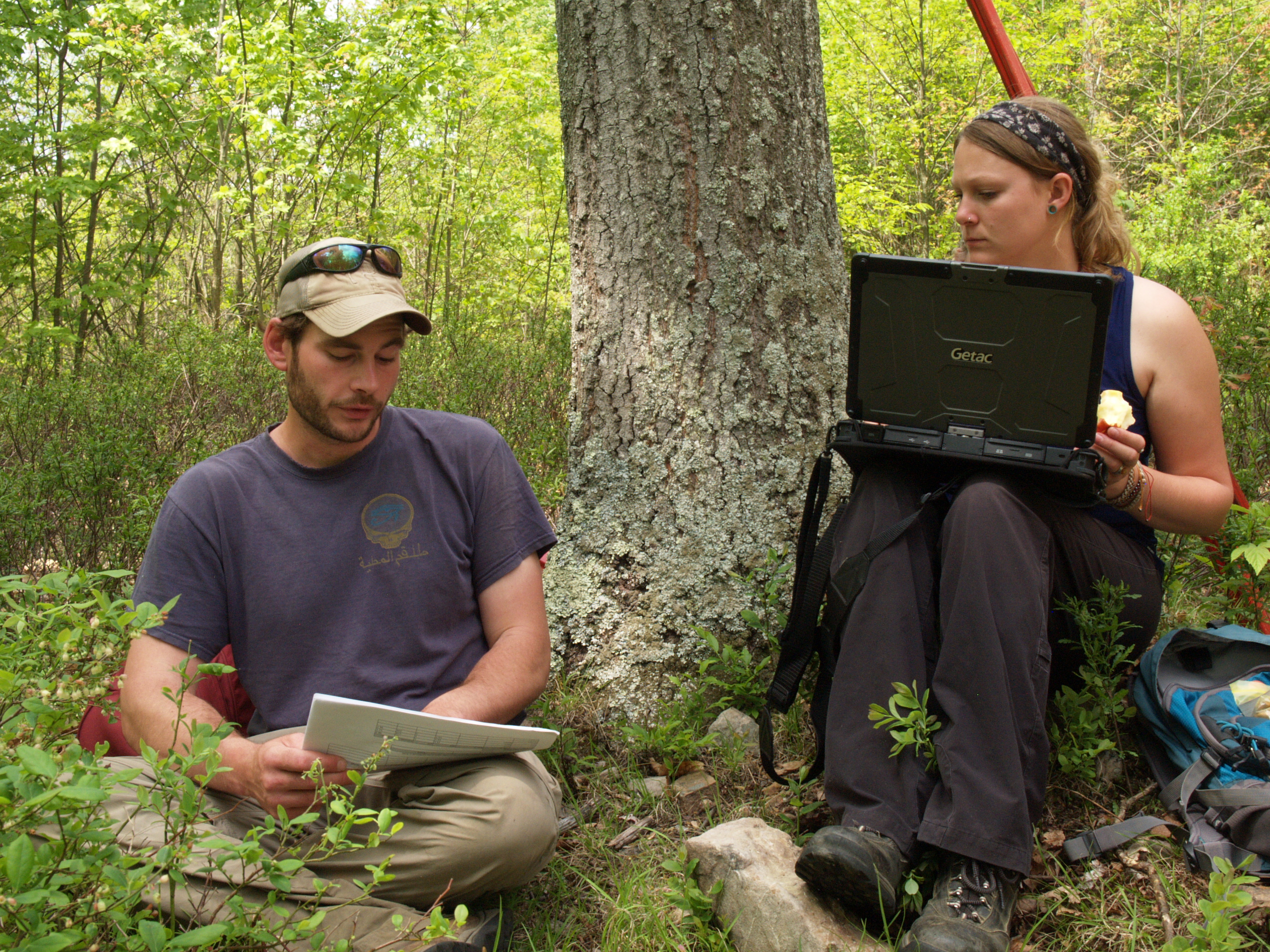
(But are they sitting under to a red or black oak?)
I’m happy to report that all crew members passed with flying colors! Did you?
-Duane Diefenbach
Answers:
- Chestnut oak (Quercus montana) seedling.
- White oak (Quercus alba) just leafing out.
- Blueberry (Vaccinium sp.).
- Mountain laurel (Kalmia latifolia) – our state flower.
- American wintergreen (Gaultheria procumbens)
- Chestnut oak (Quercus montana) seedling browsed by deer.
- Rattlesnake weed (Hieracium venosum) – named because it is found on dry, sandy soils that are also preferred by rattlesnakes this time of year.
If you would like to receive email alerts of new blog posts, subscribe here.
And Follow us on Twitter @WTDresearch
